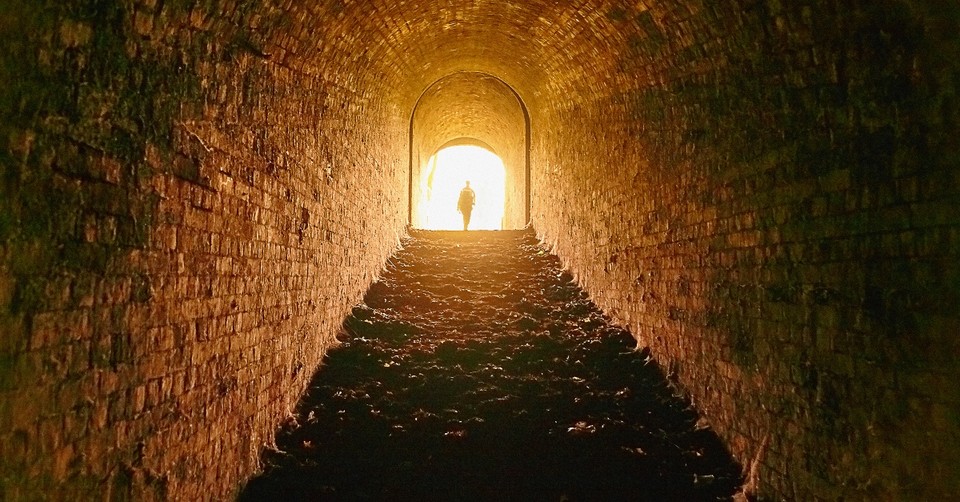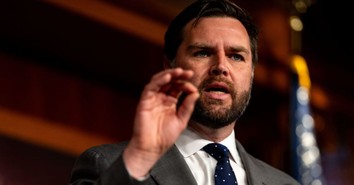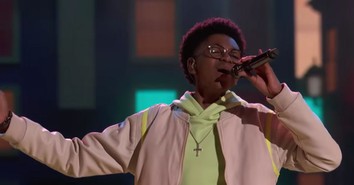Near-Death Cases Reveal Spiritual Realities

Did you know there have been more than 900 scholarly studies of near-death experiences over the last 40 years published in scientific and medical journals? That’s a lot of research.
A near-death experience (NDE) can occur when someone has experienced clinical death, and then, after just a few moments, is resuscitated. During those few seconds, or even minutes, they often experience unbelievable things.
According to Dr. Raymond Moody, who has written several books on the subject, there are a number of common denominators present among those who have had an NDE. For example, they say that they experience the sensation of being lifted out of their body and able to look back down on themselves, seeing and hearing what is going on. Then they say that they move toward a dark tunnel, and at the end of that tunnel is a bright light. It is common for them to meet others, such as angels or deceased relatives and friends.
For some, it’s a very positive experience with feelings of peace and tranquility. They don’t want to go back to their life on Earth.
For others, it’s very different.
Dr. Maurice Rawlings, who has been involved in many resuscitations as a cardiologist, tells of a man who went into a cardiac arrest while he was on a treadmill being tested for a heart problem. Rawlings immediately began external heart massage while a nurse administered mouth-to-mouth resuscitation. Another team brought in a breath mask and pacemaker equipment.
The patient occasionally gained consciousness and then lost it whenever Rawlings would interrupt the compression of his chest in order to perform other procedures to save the man’s life. Each time the man revived, he screamed, “I am in hell!” and he pleaded with Rawlings not to let him slip back into death, continually crying out: “Don’t stop! Don’t stop!”
As Rawlings continued CPR, the man became increasingly alarmed and terrified, not by the CPR – which, granted, is a violent and painful procedure – but rather at what he was experiencing on the other side of death. During moments of consciousness he said: “Don’t you understand? I am in hell. Each time you quit I go back to hell! Don’t let me go back to hell!”
Rawlings wrote that “after three or four episodes of complete unconsciousness and clinical death from cessation of both heartbeat and breathing, the man cried out, ‘How do I stay out of hell?’”
Rawlings told the man what little he remembered from Sunday School, which wasn’t much, and the man asked him to pray for him. Rawlings, who was not a committed Christian at the time, did. Fortunately, the man’s condition stabilized. After his NDE, he gave his life to Christ.
So did Dr. Rawlings.
So, not to put too fine a point on it, but what in hell happened?
There tend to be three explanations for NDEs.
The first is psychological, namely that the NDE is generated by the mind, which has been affected by expectations. In other words, the individual didn’t really see or hear or experience anything, just what they psychologically expected to experience.
The problem with that explanation is that there is no close association between NDEs and religious people. These events cross all spiritual backgrounds. Even people with vastly different expectations of what happens when we die all have similar experiences. And these experiences are distinctly Christian in nature, at least in terms of what the Bible would have to say about the afterlife.
For example, two researchers studied 1,000 people who all had an NDE. Five hundred were Americans and 500 were people from India. The researchers wanted to see how much their subjects’ cultural conditioning affected their experience.
It didn’t.
Hindu ideas of the afterlife were never portrayed in the visions of the Indian patients. No reincarnation. No descriptions of anything like Krishna, who has blue skin, or Shiva, who has three eyes.
A second explanation is neurological. That NDEs are the result of chemical and/or electrical activity of the brain. But again, that wouldn’t explain how the experiences are all so similar. And in one study of 1,400 near-death experiences by cardiologist Fred Schoonmaker, 55 patients had their out-of-body experience during a time when they had no brain waves. So a neurological explanation was neurologically impossible—no brain waves.
And neither a psychological nor a neurological explanation accounts for something else—that a lot of the cases of near-death experiences have factual corroboration. Meaning, we have corroboration between what they said they saw and heard while dead, and what we know was said and done while they were dead.
In his book Seeing the Supernatural, journalist Lee Strobel cites a 1984 case of a woman named Maria who died and was resuscitated in a hospital bed at Harborview Medical Center in Seattle. She said that during her NDE, as she left her body and left the room, she saw a tennis shoe on the hospital’s third-story window ledge.
And she described it with unmistakable specificity: she said it was a man’s shoe, left-footed, dark blue, with a wear mark over the little toe and a shoelace tucked under the heel. Kimberly Clark Sharp, a social worker who was in the room at the time, decided to check it out. And sure enough, she found the shoe exactly as Maria had described it.
According to the Handbook of Near-Death Experiences, which covers 30 years of investigations, of the patients who made verifiable observations, 92% were completely accurate and 6% were almost totally accurate. Another research study by the William James Center for Consciousness Studies found that blind people were able to see during their NDE; they were legally blind, but during their out-of-body NDE they were suddenly able to see, and what they said they saw during that time was verified.
So if it’s not psychological and it’s not neurological, what’s left?
The spiritual explanation.
Meaning that with an NDE, you have people relaying something that actually happened as part of the afterlife. They are relaying things they have seen and heard and experienced.
In other words, it’s real.
Or as Strobel concluded, “After our brain stops working, after our heart stops beating, after the doctors declare us dead, we still live on.”
Sounds kind of biblical.
James Emery White
Sources
Lee Strobel, Seeing the Supernatural.
Photo Courtesy: ©Getty Images/PATSTOCK
Published Date: May 5, 2025
James Emery White is the founding and senior pastor of Mecklenburg Community Church in Charlotte, NC, and a former professor of theology and culture at Gordon-Conwell Theological Seminary, where he also served as their fourth president. His latest book, Hybrid Church: Rethinking the Church for a Post-Christian Digital Age, is now available on Amazon or from your favorite bookseller. To enjoy a free subscription to the Church & Culture blog, visit churchandculture.org where you can view past blogs in our archive, read the latest church and culture news from around the world, and listen to the Church & Culture Podcast. Follow Dr. White on X, Facebook, and Instagram at @JamesEmeryWhite.
Originally published May 05, 2025.







